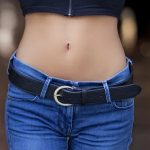Is it time it harvest your honey? In bee keeping, extracting honey is one of the most rewarding tasks. After inspecting your beehives and ensuring that there is enough to harvest, honey extractors are good tools that can ease your honey harvesting. However, do you know how to use them?
Table of Contents:
Harvesting Honey
Follow the following steps when harvesting honey using a honey extractor:
- Uncapping the combs
- Filling the frames in your extractor
- Spinning the frames
- Filling the honey storage tank
- Storing the honey
The first step is to remove the frames from you hive. This is done a day before your honey extraction. Hide the frames from the bees.
If you would like to check quality of honey you can use honey refractometer.
Uncapping the combs
Honeybees construct a wax cap to protect honey in the frames. You cannot extract the honey before removing the wax cap. There are numerous methods of removing these wax caps.

If you do not want to compromise the combs, use an uncapping roller or an uncapping knife. You can use a kitchen knife and a fork as well. However, a kitchen knife might damage the comb.
Loading the frames in the honey extractor
Next, the uncapped frames are loaded in the honey extractor. Load the frames according to the specifications of your honey extractor. If you are using one of the radial honey extractors, position the frames so that they stand upright in the interior baskets. When using honey extractors, balance them to avoid shaking while spinning.
Spinning the frames
After closing the lids, spin the honey extractor. Do not spin very hard or very quickly. Honey extractors don’t need to work too hard for the honey to come out. After extracting all the honey, the frames will feel lighter, check to confirm that the combs are empty. Do not damage the empty frames, even if they are broken. Take them back to the beehive for reuse in making more honey.
Filling the honey storage tank
Honey extractors reduce their effectiveness when used to keep honey for a long time. Therefore, transfer the honey to the storage tank. Some honey extractors have an in-built strainer that filters out impurities from your honey as the honey moves through it. If your honey extractor doesn’t have a build-in strainer, put a strainer over the storage tank: always train your honey before storing it.
Storage of the honey
Seal the container tightly before storing your honey. You can store it in a food-safe plastic vessel or in a glass jar. Don’t store your honey in metal containers to avoid oxidization. The honey can be easily oxidized in metal containers.
The Bottom Line
Honey extractors are good tools to use in honey harvesting. When using honey extractors, remember to uncap the combs, then load the honey frames in the honey contractor and finally slowly sin the frames. When the spinning becomes somehow light, confirm than no honey is remaining in the combs, and then transfer the honey into a storage tank. Don’t leave your honey in the honey extractor for long before transferring. Doing so damages the extractor. When storing your honey, use sealed plastic or glass containers, don’t use metal containers.








